“Inside our own bodies, we are outnumbered nine to one”
Introduction
The Bowel Nosodes are a series of homeopathic remedies made from human intestinal flora, developed first by Dr. Edward Bach and continued by John
Patterson and his wife, Elizabeth from 1920 until 1960. These remedies were used chiefly in British Homeopathic practice but after some years of neglect they are gaining more favour, especially now with the issues of allergies and antibiotic damage prevalent in today’s patients. Their field of action is much broader than their name suggests, with indicating symptoms arising from the whole system rather than just the bowel.
Bach discovered that certain non-lactose fermenting bacteria were more prevalent in the stool of sick people than in healthy people. This led him to type these bacteria and investigate their connection with pathology. Up until this point, these bacteria had been ignored even to the point of being unnamed and generally regarded as harmless.
At the time there was an exponential growth in the investigation of bacteria and their association with disease. It was conventional medicine’s new frontier, pioneered by Pasteur and Koch, much as genetics is today. Homeopathy was in the shadow of the apparent success of the new wonder-drugs, antibiotics so it is no surprise that this influenced Homeopathy which, through Swan, was already making extensive use of nosodes in association with Hahnammanian miasmatic theory. Bach came to identify the bacteria that he had discovered with the Psoric miasm.
John Paterson
Initially, Bach created conventional vaccines from these cultures and administered them to patients. However, after reading The Organon while working at the London Homeopathic Hospital in 1919 as house pathologist and assistant bacteriologist, he was struck by the connections between conventional vaccine theory and the Homeopathic Law of Similars and sought to link the two disciplines.
It was then that he began administering the vaccines as potentised nosodes to his patients orally and over a period of ten years gathered clinical data from 500 cases which he claimed demonstrated a 95% rate of improvement with their use.
In 1928 Bach left London on a quest to discover new natural cures which led him to Mt. Vernon in Oxfordshire and the development of the Bach Flower Remedies. A further innovation in their own right.
John Paterson, who had assisted Bach in his research, continued the work after 1928. He refined the discoveries and their clinical indications, added more remedies, formulated theory and guidelines for using the remedies in practice. He potentised the diplococcic intestinal bacteria, similar in nature to Gonorrhea, associated it with the Sycotic Miasm and successfully used this Sycotic compound to treat the GI’s Gonorrhea during the war. After his death in 1955, his wife Elizabeth continued the work for nine years, collating clinical data, making presentations and writing papers.
Throughout this work, neither Bach nor Paterson saw the bacterium as being the cause of pathology
but rather a concomitant or reflection of it. Paterson saw the bacteria as the scavengers of disease and their presence in the stool as being of constitutional significance. The disordered vital force of the patient alters their susceptibility and the intestinal flora changes in accordance with this. Contrary to the conventional perspective, Paterson regarded large amounts of non-lactose fermenting bacteria in the stool as being a positive, healthy sign that the patient was eliminating them successfully and found that this was the case after the administration of the patient’s constitutional remedy.
Non-lactose fermenting bacteria not are not unequivocally pathological per se, some of which serve useful functions in the breakdown of complex carbohydrates.
They can make a diseased situation worse in that they tend to impair the assimilation of food, acidify the environment of the gut, making it more habitable for parasites and fungi and less so for healthier, more symbiotic bacteria. They also produce more toxic substances as wastes such as Hydrogen Sulphide and histamines and even perforate the gut wall as they proliferate. Insufficient nutrition and assimilation are part of these remedies’ pictures as a result as well as the presence of other parasites such as yeasts and worms.
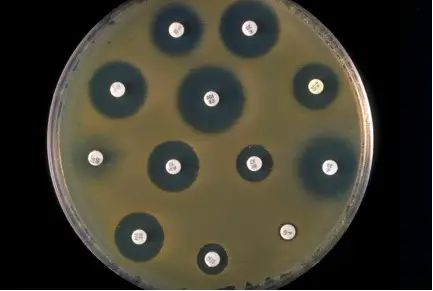
L.acidophilis,
L.casei
and
Bifidobacterium
have a broad spectrum of benefits, which will be outlined in more detail below.
Paterson’s conclusions at the centre of this page, were reached after extensive research into the effects of homeopathic remedies on bowel flora. He noticed that when a patient undergoing treatment was experiencing improvement and felt better in themselves, the amount of pathogenic bacteria yielded in their stool increased.
From the conventional point of view, this meant the patient had a disease and should not be feeling better at all. It contradicted the germ theory of disease espoused by Pasteur and others. Paterson concluded that the germs in the stool were the result of the action of the vital force of the patient as stimulated by the remedy administered. The patient was eliminating harmful germs as part of a curative process as his vital force strengthened.
By this logic, Paterson was able to map out the relationships between the specific non-lactose fermenting bacteria that had increased in the patient’s stool to the remedies that had been administered. In this way, each one of the Bowel Nosodes were assigned associated remedies arising from clinical experience, removing the need for homeopathic practitioners to have the stool samples of their patients examined.
The remedies associated with each bowel nosode are listed with the description of each one of these remedies below.
Case Strategy
Paterson suggested the following indications for the use of the Bowel Nosodes.
- New Case: For a patient who has not received homeopathic treatment the indicted remedy should be given and not the nosode.Where a tricky choice lies between a number of different remedies and most of those fall within those associated with a Bowel Nosode, the nosode may be given.
- Old Case:For a patient
who has undergone homeopathic treatment for a while and is no longer responding satisfactorily, a study can be made of their clinical history and the nosode associated with most of the effective remedies administered may be given. Even if there is no movement in the case after the nosode, the patient’s response to subsequent remedies will be more beneficial.
Warnings
- Never Mix Bowel Nosodes
- Don’t repeat a Bowel Nosode within three months
- Don’t give a Bowel Nosode when the stool count for non-lactose fermenting bacteria is 50% or higher and rising
These are deep-acting remedies that alter the homoeostasis of the patients digestive metabolism, with all that that entails for the assimilation of food, allergic reactions and flow of essential nutrients to the body. A nosode should not be repeated within three months to allow for it to act. If a remedy is necessary give one from the group of medicines associated with the nosode. Similarly, mixing the nosodes can be too much change for the body to handle and may produce severe reactions, particularly when there is challenging pathology present.
In the case where the stool count of non-lactose fermenting bacteria is over 50% and rising, the patient is actually getting better on the existing treatment and no additional remedies are required.
The Remedies
Listed below are descriptions of the major Bowel Nosodes with a mind map and description for each one. The associated polychrests for each nosode are listed on the mind maps.
They are as follows:
- Morgan Pure
- Morgan Gaertner
- Gaertner
- Proteus
- Sycotic Co.
- Dysentry Co.
The “Minor” Bowel Nosodes of B. No 7, No. 10, Faecalis and
Mutable are outside of the remit of this project in this version, being little
prescribed and mostly of historical interest.
Morgan Pure
“Congestion”
Enterobacteriacae Moganella morganii

On a mental level there is gloomy introspection with great anxiety about health, depression that can extend to a suicidal disposition (by jumping) with the paradox of desiring to be alone despite being anxious and fearful while being so. Hence it’s appearance the rubric “MIND FEAR alone, of being company, with aversion to, yet fears to be alone“. They can’t stop thinking about their diseases and will let you know how much they are suffering and that you should be suffering along with them. They are insomniacs who must have total darkness to sleep, to the point of wearing blindfolds.
Congestion and Explosiveness are keynotes of Morgan Pure and its outstanding action is on the skin. It is famous for Dry, itching, hot, red, raw and irritating skin conditions such as acne, boils, psoriasis and excema together with dry, weeping cracks and fissures. Their skin is sensitive especially to the sun and from wearing wool. Once can see why the leading remedy associated with this nosode is Sulphur.
From congestion there is sudden explosion in the form of bilious attacks, the hot flashes of the menopause and the violent pains of renal colic and calculi. They are also prone to attacks of Jaundice, heartburn and burning pains in the stomach and throat. Kidney stones are a big indication for this remedy.
Their circulation is sluggish & congested, with high blood pressure, varicose veins & ulcers and easy bruising.
Female symtoms include poils and polyps of the vulva, va-gina and anus leading to painful coition. They get offensive, corrosive Leuchorrhea in green, brown or yellow hues.
The picture is congested and irritable, with so many “-itis” conditions of the air passages in the head and chest, genito-urinary tract, skin and mucous membranes. They get bronchitis and Pneumonia – one indication for this remedy is NBWS Pneumonia or protracted convalescence.
Morgan Gaertner
“Irritation”
Pissed off
Morgan Gaertner is closely related to the Lycopodium state – a bilious remedy acerbic and irritable with much criticism and nit-picking. They are critical and censorious with a short temper, jealous and apprehensive. Their sleep is disturbed by night terrors which make them cry out. They are nervous nail biters who, in extreme states experience nervous breakdown.
They fear crowds, like many of the Bowel Nosode pictures, and suffer from claustrophobia. Like their temperament, they have a bitter taste in their mouths.
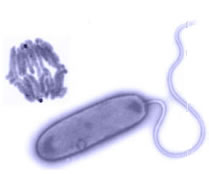
Their skin issues are dryer than Morgan Pure with flaky skin, psoriasis and dry cracks in the corners of their mouths and ears. They have herpetic and urticarial eruptions on their extremities.
Gastrointestinally, they are more prone to diarrhoea than constipation, which they get from emotional excitement and there is the signature extreme, smelly flatulence which causes uncomfortable distension. They have hard, dry stool in constipation and can get itchy, painful haemmorrhoids.
The keynote irritation extends to dozens of “-itis” conditions of the mouths & gums, digestive tract, urinary tract, eyes, ears and extremities. This really is a very irritated remedy.
They have heart and circulation issues to go with the mental stress. Heart enlargement with tightness of the chest extending to the left arm in a classic angina-like syndrome. They are woken by palpitaitons in the night which they have to move about, fart and burp to relieve.
Finally, they have stiffness and pain in the joints of their extremities in rheumatic and arthritic-type conditions.
Gaertner
“Nutrition”
Children’s Nosode
The Salmonella bacterium, associated with food poisoning, Typhoid, gastroenteritis in humans and animals.
Also known as the “The Childrens Bowel Nosode“. Nervy, thin, precocious children with fair hair, blue eyes, freckles and long eyelashes. They have overactive minds and undernourished bodies with poor muscular development. (Phos, Silica). They are curious and eager to please, fearful of being on their own and lacking in vital heat, taking chills easily and their symptoms are worse for cold. Despite this they do not like to be inside stuffy rooms. They may have nervous habits like sucking their thumbs, on a blanket or biting their nails. Inability to concentrate (ADD, ADHD) They have fears of being alone in the dark and of trying new things, like unfamiliar foods which may upset. They find it hard to assimilate emotionally as they do physically, being oversensitive to reprimand and pessimistic.
Of great value for children or adults with food sensitivities and issues with sensitive digestion such as Chrone’s disease, colitis, IBS or lactose intolerance. They can be hyperactive from food allergies from food colourings and additives. Wheat and dairy can also aggravate and this remedy can be useful in cases of Coeliac disease or lactose intolerance. Fats also cause trouble along with sugars (Ketosis). They can be flatulent and their diarrhoea can contain mucous and blood (phos, merc). This can alternate with constipation. Older children may manifest these issues with food in the form of Anorexia Nervosa. Overall, there is the tendency to malignancy with possible prognosis of tumours in adulthood.
Their food sensitivities may cause them to purge in the form of projectile vomiting or attacks of acidosis in the digestive tract, leading to headaches caused by overacidity.
All of these food assimilation issues ensure that the body is not getting its required nutrients to build a strong and health body and their physical form is skinny and malnourished as a result. The patient has a lack of stamina , looks pale and may have dark rings around their eyes. Emaciation is an indication for the use of this nosode.
There is a connection between antibiotic damage and Gaertner firstly in that this nosode treats condition for which antibiotics are routinely given – recurrent ear, nose and throat infections and also because slow recovery is in the picture and antibiotics contribute to this. Gaertner is the “infection link-breaker” and also restores the bowel flora to health after being upset by antibiotics. Adults who are slow to recover after being treated extensively with antibiotics can also need this remedy.
Gaertner has a desire for oatmeal. Not only is this a herbal remedy for their overactive nerves (Avena Sativa) but the nutrients in oats are prebiotics which feed the healthier Lactobacillus and Bifidobacterium bowel flora species.
Proteus
“Brain Storm”
Angry adrenaline
Proteus is named after the shapeshifting sea-god of Greek myth whose stench was said to be rank.
Besides being worse for storms and sun, the proteus remedy has a strong connection with the sea in its connection with chlorite metabolism and the remedy Natrum Muriaticum, or sodium chloride.
Shapesifting is a good metaphor for hysteria, a trait this remedy has in spades. With Proteus, sudden onset is the keynote. It is a violent, aggressive, spasmodic remedy with cramps, tantrums and attacks of convulsions overwhelming the nervous system from the metabolism.
The patient is closed and uncommunicative, with stubbornness and fixed ideas, hence the relationship with the Muriaticum remedies. The have a delusion of importance and may fly off the handle if questioned or opposed even to the point of violence.
It has an affinity with the kidneys (the adrenal fear and sudden anger) and their role in chloride metabolism (muriaticum). Not only do Proteus have the symptoms of active adrenals: fear, stress, anger – a “fight of flight” response but this remedy is also known for its kidney and urinary tract infections.
The digestion is very sensitive and worse for eating, although overall the are better for it. Aggravated by wine and eggs but unusually, ameliorated by neat whiskey. Photosensitivity to UV light is interesting, since UV light is used to kill pathogenic bacteria in some water purifiers. This remedy is associated with prolonged nerve strain leading to a susceptibility to febrile and convulsive conditions.
The person is “stressed out” to the point of dizziness and indeed there is an increase in number of the Proteus bacterium in the gut when a person undergoes a stressful situation.
One of the functions of salt in the cells is the transmission of nervous electricity which comes in sudden flashes of communication around the body. The suddenness, association with salt and < for storms are connected in this way and underline all the suddenness and intensity of the physical and mental symptoms.
This stressed out state uses a huge amount of energy and this remedy has a large appetite and is ameliorated by eating. Proteus craves what aggravates it, especially eggs & meats. If they give in to their craving for beer & wine they pay for it with dire hangovers. The craving-aversion-desire cycle is a keynote of Proteus.
Sycotic Co.
“Irritability”
Chronic Catarrh
Diplococcus bacteria, like gonorrhoea, with strong affinities to the mucous membranes and the sycotic miasm. Like Gonorrhoea, infection with this bacterium results in states of chronic catarrh, placing it firmly in the province of the Sycotic Miasm, just as Bach had associated Morgan and all its skin conditions with the Psoric Miasm. Patterson successfully used Sycotic Co. to treat the Gonorrhoea of US GI’s stationed in Britain during World War 2 as a sort of “alternative Medhorrinum”

Sycotic co is characterised by catarrhal, irritated conditions of the genito-urinary tract, lungs and gastrointestinal problems of acidity and diarrhoea. The mucous is thick, green and copious and effects the throat, sinuses and lungs, where they may also be asthmatic. Meningitis, as a swollen, irritated and angry conditions may call for this remedy.
There are lots of irritated reactions to food and airborne allergens. They have irritated conditions, especially of the genitourinary tract and the mucous membranes of the head and lungs.
They get diarrhoea with prolapsed rectums, acid conditions, headaches and vomit with digestive problems and emotional excitement. They may have IBS.
These are cold, sensitive pale patients with greasy skin, warts and herpes who are worse for cold, damp conditions yet ameliorated by the seaside. Unlike Medhorrinum, they are averse to and aggravated by oranges. They also have strong issues with eggs.
Dysentry Co.
“Apprehension”
The Heart Nosode
These are nervous, fearful and very hurried patients who fear everyting they do is wrong and is about to go wrong. They fear disaster in the future and this puts them in a perpetually hightly-strung state of fluster which precipitates chiefly in stomach and heart complaints. It is the “heart nosode“
The keynote “apprehension” is further towards terror on the fear spectrum.
They are hypersensitive to criticism and are beset with all sorts of nervous tics, twitches and fidgeting symptoms in their highly-strung state. They blush easily. They are panicky and everything seems to be an ordeal for them. They are afraid of going out, yet have claustrophobia, leading to the tubercular symptom of wanting to go out and wishing they were at home when they are. They are tense, restless, dizzy and extremely busy. They blush and stammer. It is a good remedy for postnatal depression, being a picture easily thrown into weariness and depression with much weeping.
They cry to release the effects of bad news and are averse to consolation. They like to spend a lot of time in bed recuperating from the stresses they experience. They are ameliorated for heat and for the open air.
Main physical complaints centre around the nerves, heart, circulation and digestion. The feel their tension in the epigastrium, they tremble, perspire, vomit, get diarrhoea, urinate and break out in rashes from their excitement. They get sinking and electric shock sensations.
They have the usual bowel nosode complaints of the skin and digestive tract, tending towards diarrhoea and ulcers. Their skin cracks split, re-heal and split open again. They get blinding headaches, nosebleeds and hayfever.
It is the affinity for the heart which stand out however with ailments from stress in the form of palpitations, tachycardia and pounding heartbeats. There is a characteristic fluttering sensations in both the heart and stomach.
The blend between Ars, Arg-nit and Tuberculinum symptoms is well marked here, along with the arsenicum nervous chilliness and amelioration from fresh air.
Afterword
Lacs,
Probiotics, Antibiotics and Autism
The Bowel Nosodes were developed amid the backdrop of the heyday of Antibiotics. Conventional medicine had conquered disease and the future was bright. Homeopathy languished as a result for a number of decades before reinventing itself outside of the confines of the more conventional model of disease treatment.
The irony is that it was the influence of the brave new frontier of medical microbiotics that brought the Bowel Nosodes into Homeopathy, yet it is only in latter years that they have come into their own as potential remedies for the very damage that that movement within conventional medicine has done to the intestinal flora of an antibiotic-using population. The bacteria have “won” a war that they did not start and modern biology is starting to realise that it has ultimately been a war with ourselves. What are animals other than masses of cooperating bacteria?
Bacteria outnumber our living cells by a factor of ten to one within our own bodies in symbiotic relationships built on trends started in nature eons before the arrival of mammals. They renew themselves at a rate of reproduction measured in minutes rather than years, giving them unparalleled capacity for adaptation to changing environments. Small wonder that the common theme for remedies made from bacteria is restlessness. Due to this fecundity we have antibiotic resistant diseases proliferating, exemplified in modern Ireland by MRSA, a condition both created and encouraged by antibiotics, the wonder drugs which the bacteria kingdom has taken in its stride.
One the one hand, conventional medicine seeks to obliterate all bacteria in a sick person in the hope of killing a select pathogenic few and on the other hand, vaccines inject those same bacteria directly into our bloodstreams, in systems of the body that are less able to cope with that kind of intervention.
The results are a modern blooming of digestive and assimilative disorders, allergies and intolerances of all kinds with their concomitant systemic and behavioural symptoms. Sound familiar? That’s because you’ve been reading about them in the remedy pictures listed above. In the Bowel nosodes we have important tools to address the imbalances that we have created by our misunderstanding of what role bacteria have to play in our health.
When a child is born, her bowel is quickly populated by E.coli and other non-lactose fermenting bacteria picked up by the child’s journey through her mother’s vagina. The first “probiotics” that we naturally receive are the species
Bifidobacterium which is ingested with breast milk, from which the remedy Lac Humanum is made. These aid digestion, reduce allergic reactions and can even prevent tumour growth. From Cow’s milk, cheese and fermented foods such as yoghurt, sauerkraut, miso soup, kombucha, kefir and pickles we 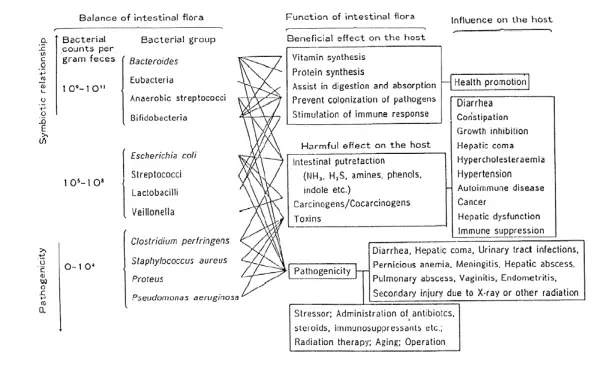
brings our gut flora to a healthy balanced state, not too acidic, and with an ecosystem that works symbiotically with our nutritive needs making the body more efficient, nourished and resistant to pathology.
The use of formula and cow’s milk with babies breaks that cycle. It is further damaged by the heavy use of antibiotics early in life. The non-lactose fermenting bacteria become dominant, creating their own more acidic, congested environment, hampering the assimilation of nutrients, congesting the gut and creating a septic environment much more favourable to yeasts and parasites such as worms (Many of the Bowel Nosodes listed above have worms in their picture). They can even penetrate the gut wall, causing the spread of toxins to other systems of the body, compromising the overall immunity.
The pictures of the Bowel nosode remedies reflect this influence of non-lactose fermenting bacteria on human health and the systemic impact of impaired assimilation of food. Acidity in digestion with its attendant ulcers, headaches and bilious attacks. Eruptions and warts on the skin of the extremities. Vomiting, diarrhoea, constipation and a whole host of food intolerances, cravings and allergies.
The lack of adequate nutrition and release of toxins leads to primal behavioural states of fear, stress, anger and nervous tension; all expressed in the remedy pictures above.
In practice Morgan Pure follows well from Lac Humanum. This makes sense from the perspective of the bowel flora and its process of development from birth. The connection between the bowel nosodes, the Lac remedies and remedies made from the substances involved in nutrition, such as Lactic Acid, Saccharinum Officinarum and other sugars is a topic that deserves further research..
Finally, reflecting some of the remedy pictures above that have short attention spans, hyperactivity or are fearful and introspective. It has been found conclusively that the bowel flora of autistic spectrum, hyperactive and ADD/HD children consistently show a higher percentage of non-lactose fermenting bacteria. The Bowel nosodes may well assist us in the treatment of these conditions that are on the rise in modern society which in turn are connected, albeit controversially, with both antibiotics and vaccines.
References
Books, Journals, Web Resources
Synoptic Materia Medica 2 Franz Vermeulen, Emryss, Haarlem, 2003
Monera – Kingdom Bacteria and Viruses, Vol 1. Franz Vermeulen, Emryss, Haarlem, 2005
A Treatise on the Bowel Nosodes. Dr. Y.R. Agrawal, Vijay Publications, Delhi, 2003
The Bowel Nosodes. Dr. John Paterson. B.Jain, Delhi 1998
Remedy Notes 2. John Wallace, SrP Press, Tunbridge Wells, Kent, UK, 2003
The Bowel Nosodes: A group of neglected remedies. Ai-ling Makewell. Interhomeopathy.org, August 2006
http://www.interhomeopathy.org/index.php/journal/entry/bowel_nosodes_a_group_of_neglected_remedies/
Bowel Nosodes, My Clinical Experiences Ai-ling Makewell, InterHomeopathy.org, August 2006
http://www.interhomeopathy.org/index.php/journal/entry/bowel_nosodes_my_clinical_experiences/
Gut and Psychology Syndrome: Natural Treatment for Autism,ADD/ADHD,Dyslexia,Dyspraxia,Depression,Schizophrenia,
Dr. Natasha Campbell-McBride MD. Medinform Publishing, 2004
Wikipedia References http://en.wikipedia.org/wiki/
Anaerobic organism, Bifidobacterium, Biotin, Diabetes mellitus, Escherichia coli, Fructooligosaccharide, Lactic Acid, Lactic Acid Bacteria, Lactobacillales, Lactobacillus acidophilus, Lactobacillus casei, Lactose, Probiotic, Proteus (Bacterium), Salmonella, Salmonella Enterica, Vitamin K, Gut Flora
Bifidobacteria: their significance in human intestinal health
Ishibashi N, Yaeshima T and Hayasawa H.
Morinaga Milk Industry Co. Ltd., Nutritional Science Laboratory, 5-1-83, Higashihara, Zama-City, Kanagawa, 228-8583, Japan
Lac Maternum or Lac Humanum … How do We Choose? Patricia Hatherly, Homoeopathic Links 2007; 20:63-67
“This article first appeared on Scribd http://www.scribd.com/”
Mark O’Sullivan BA (hons) Lic.I.S.H ISHom, is a registered homeopath based in the Dublin Holistic Centre . He also teaches introductions to Homeopathy and the Bach Flower Remedies. www.homeopath.ie



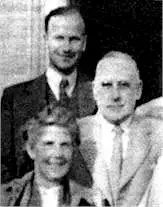
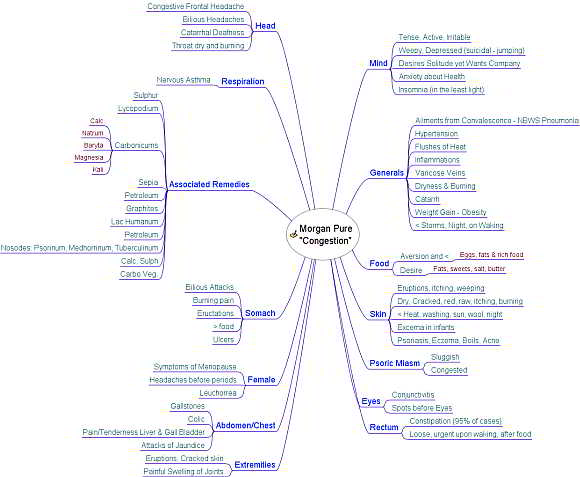
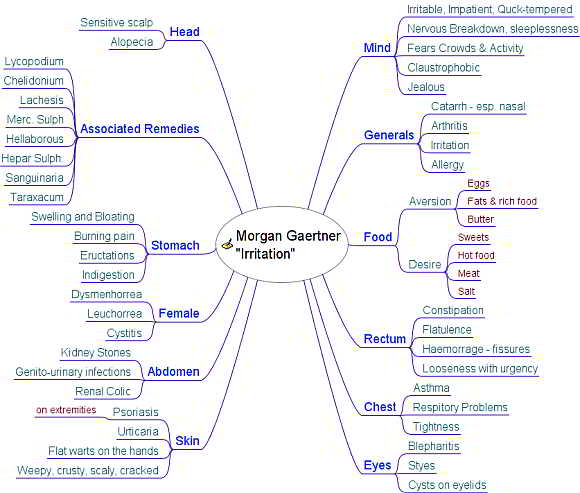
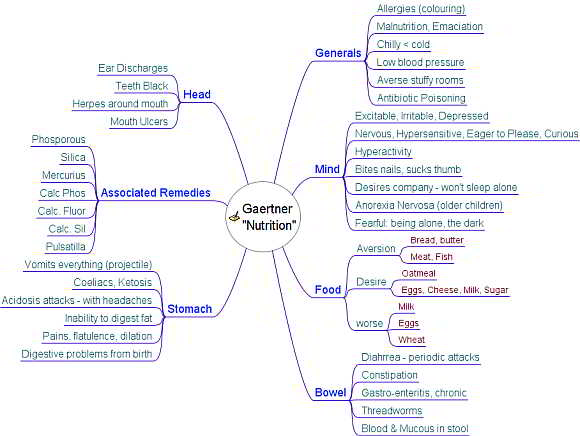
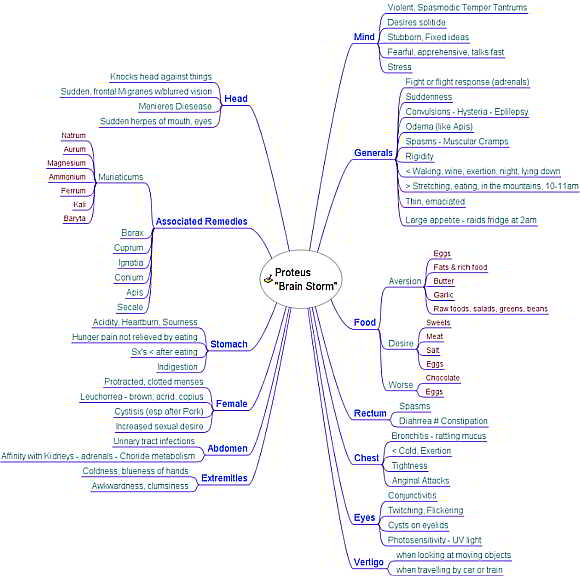
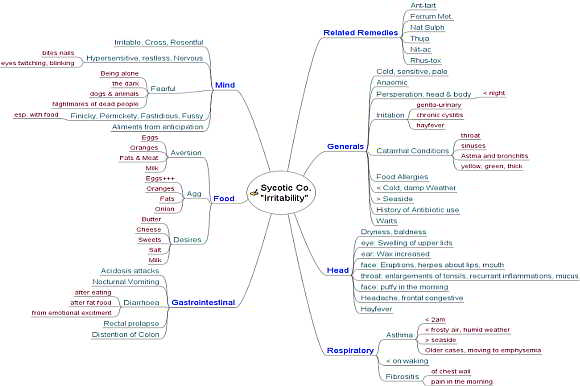
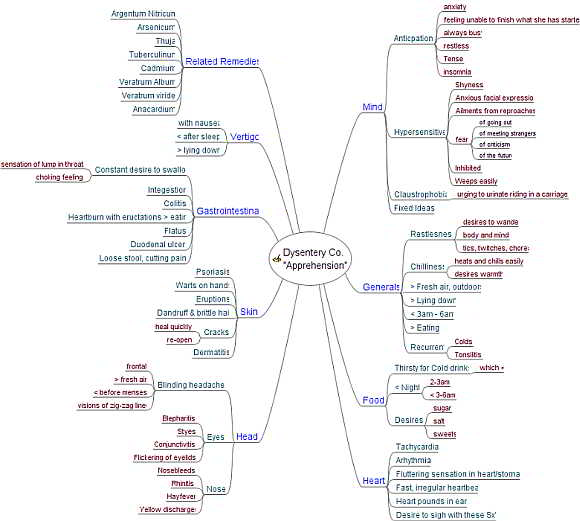


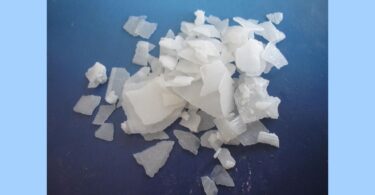

Hi,
Wonderful article! I have been suffering from a host of problems for the past so many years and after wrong (or partial) diagnosis after diagnosis, it finally seems now my problem is because of the use of antibiotics. My diagnosis currently is candida (yeast, fungal) overgrowth and that has been causing very bad health problems. Gaertner seems to strike the nail on the problems I have also, though it doesn’t exactly say ‘candida’ as the cause, to which, I am pretty open. Bowel imbalance could mean all kinds of imbalances so this could be the overlooked reason too. I am wondering if I can get advice about these bowel nosodes and their dosages in India (Chennai if there are options). I am wary of self-prescribing. If anybody from the editors has information, please do help me out.
I have several books on the subject, but this article is outstanding for clarity.
The wonderfull article I will keep this in mind and follow accordingly.
sadanand dixit.
Very interesting article with usefull information.
Would it be possible to have the ‘pictures’ of the materia medica of this nosodes downloadable? It would be nice to have them at hand on my laptop!
Thanks!
Dear Dr .
Namastey
Fabulous article . Instuctions on its posology is very importent , every one must follow it fof the safety of both patient and doctor as well
anil kumar kulshreshtha .
Great article. I had antibiotic poisoning from years & years of them as a child. Fairly recently went to see a homeopath who lectures on these remedies & uses them in the UK. I’d been told before that you couldn’t ‘undo’ the damage. They are very deep acting remedies – I’d definitely want to see a professional for them as you need to be monitored. Yes, it worked! Thanks.
Excellent work .
please can you tell me in the case of a three year old boy who shows symptoms of lac maternum and also has severe gut issues had high doses antibiotics as a 5 month old baby I want to follow lac with a bowel nosode but which one?can you tell me what is diffrent if I choose morgan pure or gaertner after the lac mat…? they both sound indicated in this case
can I use gaertner after i use morgan pure?? has anyone used one after the other with good reslults?
A wonderful article on historical background and development stages of bowel nosodes.
I would be pleased if I can be of any help to the Hpathy 4 everyone and the patients for telediagnosis.
Wonderful article. Can’t say enough about the information. Too bad that the medical society doesn’t recognize homeopathics.
were there supposed to be links at the end for the Bowel nosodes-text implies there should be?
well written thank you
I was diagnosed with Crohn’s Disease 13 years ago, at age 15. I became symptomatic a year prior (it took that long to diagnose) after being prescribed 3,000 mg of amoxicillin a day for a sinus infection… I took conventional medication for 2 years before getting into naturopathic medicine at 17. I was in remission for about 6 years, but after having my first child and being in an abusive marriage for several years, I’ve been hospitalized 3 times in the last 4 years, and I can’t gain control of the inflammation in my small intestines or colon with use of herbs or diet. The only thing that works is hyperbaric oxygen therapy, at 9 psi for 60 minutes a day, every day. Unfortunately, I can no longer afford treatment, and it will be some time before I have access to my own chamber. I am still symptomatic on 30 mg of Prednisone a day, since my hospitals
stay in June (2017), with proper, organic diet and consistent use of herbs and supplements. I’ve tried use of a Rife machine, acupuncture, Brain Integration Technique (Crossinology), grounding, dieting (blood type diet, chicken stock or GAPPS diet), and supplements from Nature’s Sunshine Products and Garden of Life. I was recently advised from one of my naturopathic mentors about bowel nosodes, but she lives states away, and it is difficult to get responses from her. She said she would be sending me one of the nosodes, but that has yet to be seen. That was weeks ago. I have read over the different options multiple times, and I seem to fit the bill on two or three of them, but I’m thinking I should start with the gaertner nosode. The issue is, it seems to be impossible to find where to purchase these. I’m kind of at a loss here, and while I’m not familiar with you, I’m hoping you can offer some sort of help or advice for me. Obviously, I’m a little desperate… Thank you for your time.
Amber feel free to contact me
[email protected]
Outstanding article. Thank you for sharing your work!
I have to say I investigated the Bowel Nosodes years ago and studied them and used them in my busy practice and found them of no use whatsoever. I saw no specific action on thsir indications. The best results are obtained from the homeopathic similimum whatever the problem.
Great article on bowel nosodes, it is very very helpful. There are certain homeopaths who has bias against these nosodes, and I have encountered few. It worked wonders for me and my family treating autoimmune conditions.